 |
Foodoric and associated companies are chemicals manufacturing companies operated in India USA UAE Europe Asia and other countries around the world. The associates have one or more of certifications like ISO-9001, ISO-14001, ISO-22000:2005, FSSC 22000; OHSAS 18001; Kosher and Halal Certified; HACCP, FSSAI and FDA - GMP approval. Buyers are assured of good quality and CIF wholesale and retail price for supplies of our Potassium Chloride. |

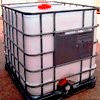
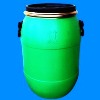
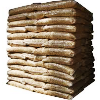
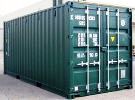
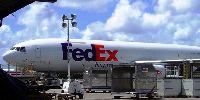
Potassium Chloride Pure and IP BP USP ACS Reagent FCC Food Grade Manufacturers Suppliers
Potassium Chloride
Pure and IP BP USP ACS Reagent FCC Food Grade
Potassium Chloride CAS Number 7447-40-7, Molecular Formula: KCl, Molecular Weight: 74.5
Specifications of Potassium Chloride Pure| Specification | Our Guaranteed |
| Percent by wt. | 99% (KCl) Potassium Chloride |
| Iron | 10 ppm |
| Sodium Chloride | 1% |
| Matter insoluble in water | 0.05% |
| Sulphate | 0.05% |
| Heavy metals as Lead | 5 ppm |
| Hydroxides | .01% |
| Calcium | 0.02% |
| Magnesium | 0.05% |
| Moisture % by Wt. Max. | 1% |
INDIAN PHARMACOPOEIA
POTASSIUM CHLORIDE IP
| Particulars | Potassium Chloride IP Grade |
| Dry Basis Assay (KCl) | 99.0% Potassium Chloride |
| Description | White, crystalline powder, odorless. |
| Solubility | Freely soluble in water; sparingly soluble in ethanol (95%). |
| Matter Insoluble in Water | Clear & colorless solution (10% KCl w/w). |
| Acidity or Alkalinity | Passes the Test |
| Barium | Passes the Test |
| Arsenic | 1 ppm max. |
| Iron | 20 ppm max. |
| Calcium & Magnesium | Passes the Test |
| Sulphate | 300 ppm max. |
| Heavy Metals | 10 ppm max. |
| Bromide | 0.1% |
| Iodide | Passes the Test |
| Loss on Drying | 1.0% max. |
Potassium Chloride FCC Food Grade Specifications
KCl 74.55
Formula weight 74.55
DESCRIPTION:
Potassium Chloride occurs as colorless, elongated, prismatic, or cubical crystals, or as a white, granular powder. It is stable in air. Its solutions are neutral to litmus. It may contain up to 1.0% (total) of suitable food-grade ant-caking, free-flowing, or conditioning agents such as calcium stearate or silicon dioxide, either singly or in combination. One gram dissolves in 2.8 mL of water at 25°, and in about 2 mL of boiling water. Potassium Chloride containing anti-caking, free-flowing, or conditioning agents may produce cloudy solutions or dissolve incompletely. It is insoluble in alcohol.
Function: Nutrient; gelling agent; salt substitute; yeast food.
REQUIREMENTS:
Identification: A 1:20 aqueous solution gives positive tests for Potassium and for Chloride.
Assay: Not less than 99.0% of KCl after drying; and not less than 98.0% of KCl after drying when a sample contains added substance.
Acidity or Alkalinity: A sample containing no added substance passes test.
Heavy Metals (as Pb): Not more than 5 mg/kg.
Iodide and/or Bromide: Passes test.
Loss on Drying: Not more than 1.0%.
Sodium: Passes test.
Potassium Chloride USP Specifications
KCl 74.55
Assay: Potassium Chloride contains not less than 99.0 percent and not more than 100.5 percent of KCl, calculated on the dried basis.
Identification: A solution (1 in 20) responds to the tests for Potassium and for Chloride.
Acidity or alkalinity: To a solution of 5.0 g in 50 mL of carbon dioxide–free water add 3 drops of phenolphthalein TS: no pink color is produced. Then add 0.30 mL of 0.020 N sodium hydroxide: a pink color is produced.
Loss on drying: Dry it at 105 for 2 hours: it loses not more than 1.0% of its weight.
Iodide or bromide:
IODIDE:
Standard stock solution— Transfer an accurately weighed quantity, about 41 mg, of potassium iodide to a 25-mL volumetric flask. Dissolve in and dilute with water to volume, and mix.
Standard solution— Dilute 1.0 mL of Standard stock solution with water to 25 mL, and mix. Dilute 2.0 mL of this solution with water to 8 mL, and proceed as directed for Test solution beginning with “Add 1 mL each of chloroform”.
Test solution— Dissolve 2 g in 8 mL of water. Add 1 mL each of chloroform and diluted hydrochloric acid, then add 2 drops of a chloramine T solution (0.1 in 100), and shake gently. The violet color of the chloroform layer is not darker than that of a concomitantly prepared Standard solution: the limit is 0.005%.
BROMIDE:
Standard solution— Transfer an accurately weighed quantity, about 32 mg, of sodium bromide to a 25-mL volumetric flask. Dissolve in and dilute with water to volume, and mix. Dilute 2.0 mL of this solution with water to 8 mL, and proceed as directed for Test solution beginning with “Add 1 mL each of chloroform”.
Test solution— Dissolve 2 g in 8 mL of water. Add 1 mL each of chloroform and diluted hydrochloric acid, then add 5 drops of a chloramine T solution (1 in 100), and shake gently. The brown color of the chloroform layer is not darker than that of a concomitantly prepared Standard solution: the limit is 0.1%.
Aluminum: where it is labeled as intended for use in hem dialysis— Proceed as directed using 2.0 g of Potassium Chloride to prepare the Test Preparation: the limit is 1 µg per g.
Calcium and magnesium: To 20 mL of a solution (1 in 100) add 2 mL each of 6 N ammonium hydroxide, ammonium oxalate TS, and dibasic sodium phosphate TS: no turbidity is produced within 5 minutes.
Sodium: A solution (1 in 20), tested on a platinum wire, does not impart a pronounced yellow color to a non-luminous flame.
Heavy metals: Dissolve 2.0 g in 25 mL of water: the limit is 0.001%.
Organic volatile impurities: meets the requirements.
Potassium Chloride BP Ph Eur Specifications
KCl 74.55
DEFINITION
Content:
99.0 per cent to 100.5 per cent of KCl (dried substance).
CHARACTERS
Appearance:
White or almost white, crystalline powder or colorless crystals.
Solubility:
Freely soluble in water, practically insoluble in anhydrous ethanol.
IDENTIFICATION
It gives the reactions of chlorides.
Solution S gives the reactions of potassium.
TESTS
Solution S: Dissolve 10.0 g in carbon dioxide-free water R prepared from distilled water R and dilute to 100 ml with the same solvent.
Appearance of solution: Solution S is clear and colorless.
Acidity or alkalinity: To 50 ml of solution S add 0.1 ml of bromothymol blue solution. Not more than 0.5 ml of 0.01 M hydrochloric acid or 0.01 M sodium hydroxide is required to change the color of the indicator.
Bromides: Maximum 0.1 per cent.
Iodides: Moisten 5 g by the drop wise addition of a freshly prepared mixture of 0.15 ml of sodium nitrite solution, 2 ml of 0.5 M sulphuric acid, 25 ml of iodide-free starch solution and 25 ml of water. After 5 min, examine in daylight. The substance shows no blue color.
Sulphates: Maximum 300 ppm.
Aluminium: Maximum 1.0 ppm, if intended for use in the manufacture of hem dialysis solutions.
Barium: To 5 ml of solution S add 5 ml of distilled water and 1 ml of dilute sulphuric acid. After 15 min, any opalescence in the solution is not more intense than that in a mixture of 5 ml of solution S and 6 ml of distilled water.
Iron: Maximum 20 ppm.
Magnesium and alkaline-earth metals: Maximum 200 ppm, calculated as Ca.
Sodium: Maximum 0.10 per cent, if intended for use in the manufacture of parenteral preparations or hem dialysis solutions.
Heavy metals: Maximum 10 ppm.
Loss on drying: Maximum 1.0 per cent, determined on 1.000 g by drying in an oven at 105 C for 3h.
Potassium Chloride ACS Analytical Reagent Specifications
KCl
Formula Wt 74.55
CAS Number 7447-40-7
REQUIREMENTS
Assay: 99.0-100.5% KCl
pH of a 5% solution: 5.4-8.6 at 25C
MAXIMUM ALLOWABLE
Insoluble matter: 0.005%
Iodide (I): 0.002%
Bromide (Br): 0.01%
Chlorate and nitrate (as NO3): 0.003%
Nitrogen compounds (as N): 0.001%
Phosphate (PO4): 5 ppm
Sulfate (SO4): 0.001%
Barium (Ba): Passes test
Heavy metals (as Pb): 5 ppm
Iron (Fe): 3 ppm
Calcium (Ca): 0.002%
Magnesium (Mg): 0.001%
Sodium (Na): 0.005%
Potassium Chloride Manufacturers Suppliers:
Foodoric Group of Cos
India, USA, UAE, Europe
e-mail: info@foodoric.com

Copyright
Last
14 March, 2022
Potassium Chloride Suppliers, Exporters, Importers, Manufacturers offering good CIF wholesale and retail prices, quality and online information.
A jackal woke up early in the morning and went in to the plains. He looked at his long shadow in the rising morning sun and said to himself, "I must have a camel for my meal today".
He kept moving around till noon and it was getting hot and the jackal was tired. He was also hungry and thirsty. He looked at his small shadow in the mid-day sun. He murmered, "I was only joking about the camel, a mouse will do".